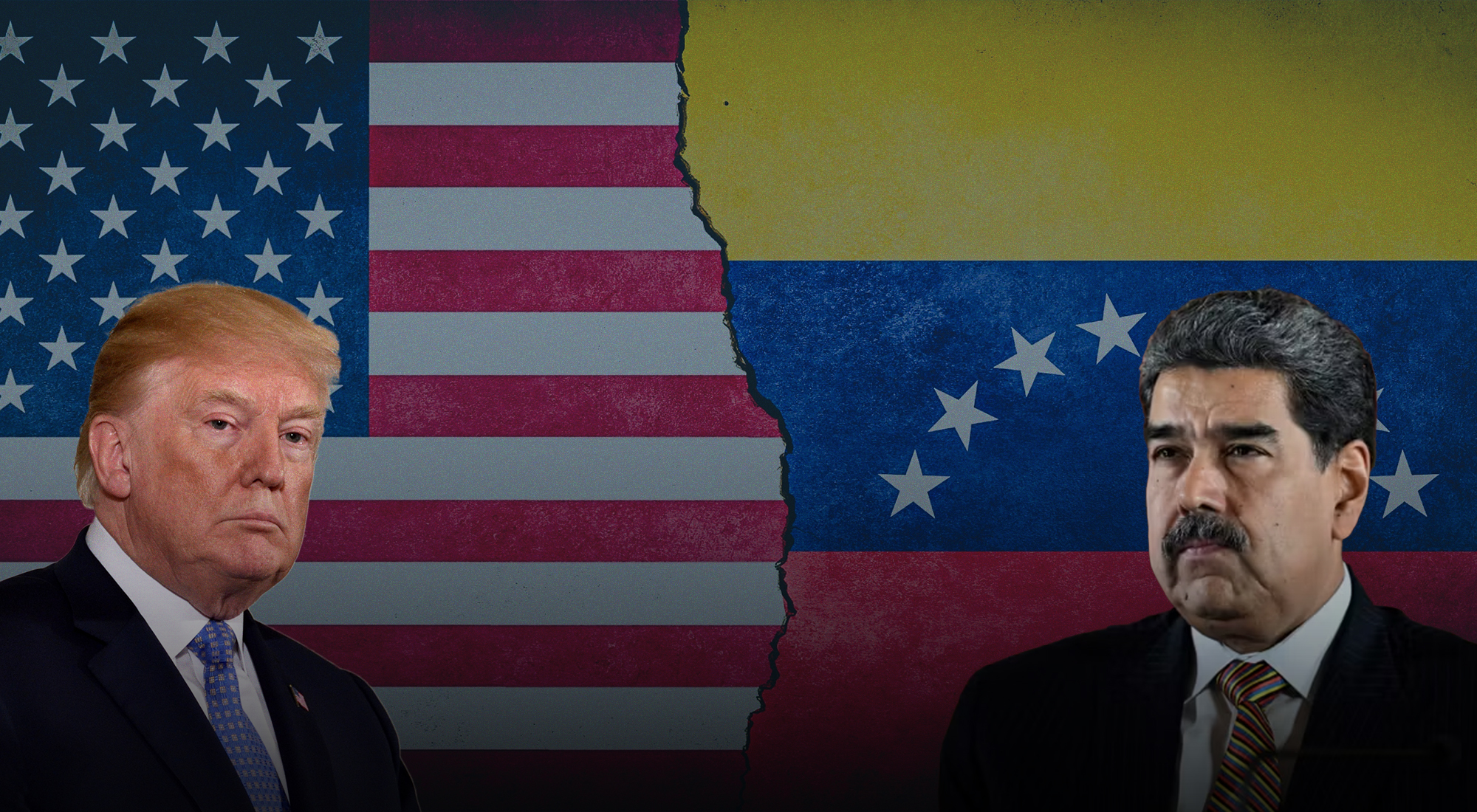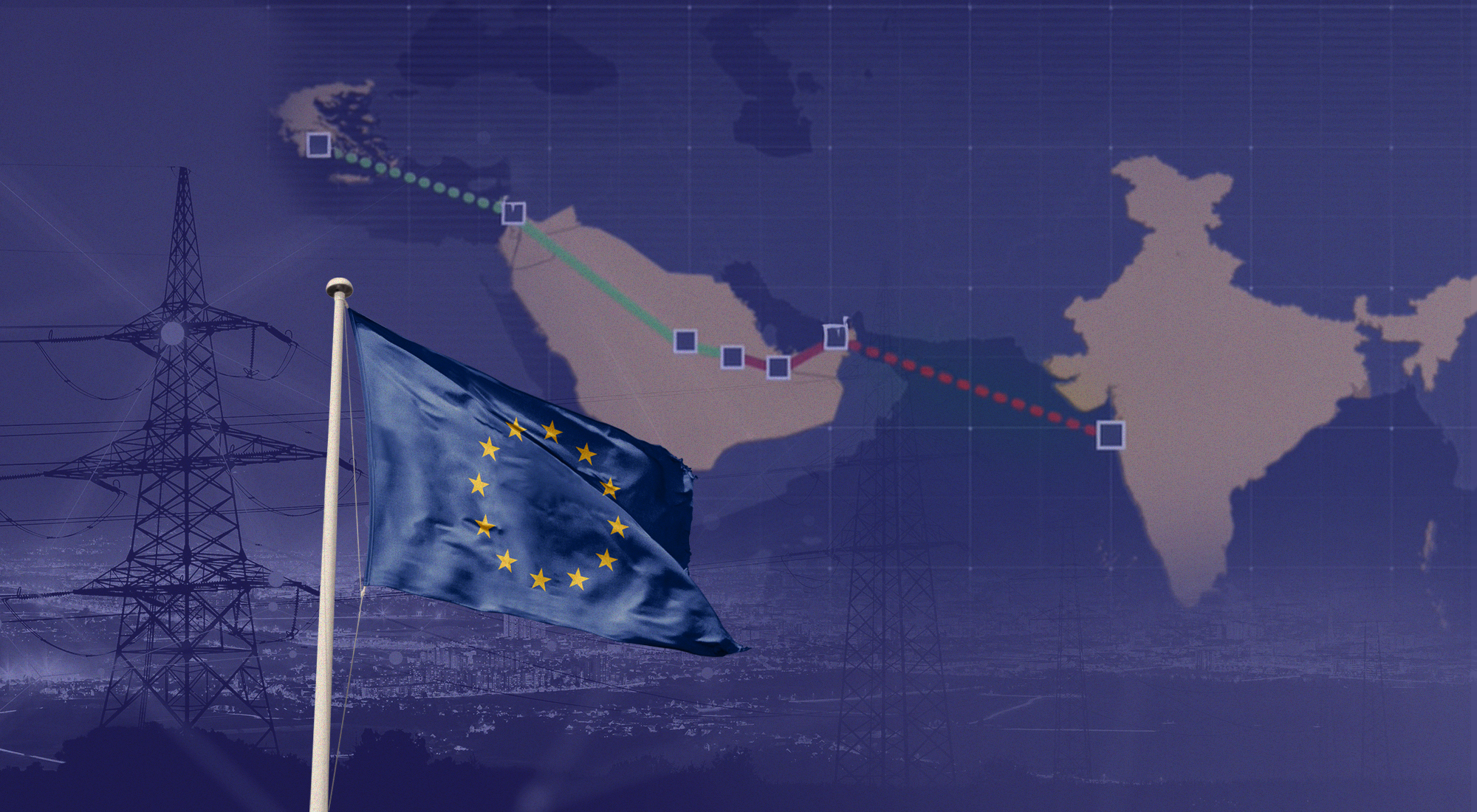Due to the heightened danger of the potential use of nuclear weapons – a precarious biproduct of the Russia-Ukraine conflict, the fear of nuclear war has surged to its highest levels since the era of the Cold War. Concerns over a wider conflict loom with the possibility of drawing in NATO countries – some of which possess nuclear weapons. Meanwhile, US backing for Ukraine’s war effort has further strained its relations with Russia, raising concerns that Cold War deterrence strategies, which shaped their relationship for decades, may be less effective in today’s geopolitical landscape.
As nuclear weapons proliferated throughout the Cold War, the stark reality of potential annihilation spurred the US and the Soviet Union to embark on a new era of negotiation, seeking innovative approaches to manage their deep-seated ideological and strategic rivalries. The risk of escalation and potential for nuclear conflict compelled the US and the Soviet Union to explore alternative methods of engagement, including holding regular summits with top leadership, resulting in opening direct lines of communication.
Arms control negotiations, including the Strategic Arms Limitations Talks (SALT I in 1967 and SALT II in 1972), limited the number of nuclear missiles in their respective arsenals by setting limits on intercontinental ballistic missiles (ICBMs), and limited anti-ballistic missile (ABM) defenses. Such an agreement helped prevent an unconstrained arms race, reduced the risk of miscalculation, and were considered trust-building measures geared toward de-escalating tensions. More importantly, these conducive interactions laid the groundwork for future cooperation, including the landmark 1987 Intermediate-Range Nuclear Forces (INF) Treaty, which eliminated an entire class of intermediate-range nuclear missiles.
These types of treaties are not perfect; they are typically non-binding, and are far from a guarantee in ensuring nuclear non-proliferation. Enforcement challenges and non-compliance by some nations remain. A lack of transparency also creates challenges and increases the level of distrust among nations. Furthermore, the rise of non-state actors and heightened terrorist activity globally intensify the chilling possibility of nuclear weapons falling into the wrong hands, increasing the risk of a conflict spiraling out of control.
Such dangers underscore the urgent need for continued non-proliferation efforts, even amidst deep mistrust and rising tensions among major nuclear powers, particularly the permanent members of the UN Security Council. In today’s precarious global security environment, effective nuclear diplomacy remains a critical tool to navigate the complex geopolitical landscape and prevent nuclear catastrophe.
The global nuclear arsenal
The state of global security is intrinsically tied to nuclear non-proliferation efforts. At the peak of the Cold War, the US and the former Soviet Union had nearly a combined 60,000 nuclear warhead arsenal.[1] Easing tensions and stabilization during the late 1960s and 1970s fostered an era of détente (thawing) between the Americans and the Soviets, resulting in a slew of arms control treaties.[2] These factors, along with the economic burden of maintaining nuclear arsenals, all played a significant role in decreasing the number of nuclear weapons since the Cold War.
Today, there are currently nine nuclear-armed states worldwide (US, Russia, the UK, France, China, India, Pakistan, North Korea, and Israel). According to the Federation of American Scientists, these nine states possess more than 12,500 nuclear warheads combined – 88% of which are in the arsenals of the US and Russia—with thousands ready to be launched on short notice.[3] Despite the fact that today’s global stockpiles represent an 80% reduction compared to Cold War era levels, the destructive potential of a nuclear war remains a stark possibility.
North Korea
North Korea often dominates headlines in the West regarding its nuclear threats, yet it is important to consider the bigger picture. Russia and the US together possess a staggering total of over 11,000 nuclear warheads, compared to North Korea’s estimated 30.[4] This highlights that the primary concern is not just the number of weapons, but rather who controls them. Having a nuclear arsenal in the hands of a leader perceived as irrational raises significant international anxieties.
Since 2006, North Korea has conducted six nuclear tests under the leadership of Kim Jong Un who has vowed to boost his nation’s nuclear capabilities.[5] These tests violate the Nuclear Non-Proliferation Treaty (NPT), which North Korea signed in 1985. Although the NPT aims to prevent the spread of nuclear weapons by obliging members to halt their nuclear development, North Korea’s ongoing nuclear program has continued to heighten regional tensions and instability.
In response, South Korea, also a signatory to the NPT, has expressed a willingness to develop its own nuclear capabilities. In 2023, President Yoon Suk-Yeol stated that “it is possible the problem gets worse, and our country will introduce tactical nuclear weapons or build them on our own.” [6] Although the development of nuclear weapons is a clear violation of the NPT, such cases reiterate that the NPT can be easily undermined as a result of unpredictable “neighbors,” causing regional and global unease. While this does not render the NPT ineffectual, it does highlight the treaty’s complex enforcement challenges.
The United Kingdom
The UK, which currently maintains a nuclear arsenal of 215 weapons, has committed to reducing its stockpile to reach a maximum of 180 warheads before 2030, a 65% decrease compared to its peak supply during the Cold War.[7] This reduction also applies to its deployed strategic warheads. As part of the Trident nuclear programme, the UK maintains a policy of “continuous at-sea deterrence” using its four Vanguard-class submarines – one of which patrols the seas at all times. One Trident vessel can carry 40 nuclear warheads across eight missiles, which is roughly 320 times the explosive power of Hiroshima’s atomic bomb.[8]Top of Form
Tactical Weapons
There also remains the unthinkable scenario of nuclear weapons, mainly non-strategic nuclear weapons – more specifically, tactical nuclear weapons, falling into the hands of malign actors such as proxy forces, terrorist groups, or militant non-state actors. These low-yield nuclear weapons designed for use on the battlefield are currently not covered by strategic arms control treaties. Considering there is no agreed-upon size that defines tactical weapons, the challenge is that tactical nuclear weapons are typically many times larger than conventional bombs and can cause radioactive fallout and other deadly effects beyond the explosion itself.
Low yield tactical weapons are often loosely classified as those having 10 to 100 kilotons of dynamite.[9] The problem with that label, however, is that the atomic bomb the US dropped on Hiroshima was the equivalent of about 15 kilotons of dynamite[10] – which by today’s standards, would be placed on the low-end of the unofficial classification scale. During a congressional hearing in 2018, former US Defense Secretary James Mattis testified that there’s no difference at all between strategic and non-strategic nuclear weapons, stating, “I don’t think there is any such thing as a ‘tactical nuclear weapon.’ Any nuclear weapon used any time is a strategic game-changer.”[11]
A nuclear winter, not a victory
In terms of widespread nuclear fallout, the worst-case scenario remains a full-scale nuclear war between the US and Russia, resulting in a global catastrophe. Experts estimate that such a conflict could wipe out well over half of humanity. Beyond the immediate casualties, the resulting “nuclear winter” would cause a devastating drop in global temperatures, ranging from at least 20 degrees Celsius cooler in North America to a staggering 35 degrees Celsius drop in Central Asia. These extreme conditions would disrupt agriculture production worldwide, putting nearly 5 billion people at risk of starvation. This includes a potential 99% population loss across the US, Europe, Russia, and China. [12]
The risk of such irreversible, devastating destruction has laid much of the groundwork for altering the global perception on the importance of prioritizing nuclear non-proliferation efforts as a global security priority.
Why do states pursue nuclear weapons?
As we navigate an era of heightened geopolitical uncertainty and intensifying competition between major powers, a crucial question emerges: does the Cold War logic of nuclear deterrence still hold true? This reasoning, often referred to as Mutually Assured Destruction (MAD), suggests that nuclear-armed states with similar capabilities are unlikely to attack each other for fear of devastating retaliation. According to this logic, nuclear weapons can prevent large-scale war and promote stability. International Relations realist scholar Kenneth Waltz who famously stated “those who like peace should love nuclear weapons,” believes this rationale explains the relative peace during the Cold War.
There remain two overarching arguments as to why states may look to obtain nuclear weapons, despite their obvious potential for mass destruction – not to mention the economic and political baggage. First, nuclear weapons are seen as the ultimate guarantor of security. No nuclear-armed state has ever faced a full-scale conventional war with another nuclear power (except for India and Pakistan, who have fought several wars over Kashmir). This historical trend fuels the perception that nuclear weapons provide a shield against existential threats. Secondly, nuclear weapons carry a powerful symbolic weight. Possession elevates a state’s international standing and prestige. It is no coincidence that all five permanent members of the UN Security Council, the most powerful decision-making body in the world, are nuclear-armed nations.
Conversely, following the collapse of the Soviet Union in 1991, three former Soviet republics – Belarus, Kazakhstan, and Ukraine – inherited more than 3,000 strategic nuclear weapons the USSR had previously positioned within their territories.[13] Under the 1992 Lisbon Protocol, the newly independent states committed to returning the nuclear weapons to disarmament facilities in Russia. At the time, the decision aimed to ensure there would not be multiple successor states with nuclear weapons, reducing the risk of proliferation.
In addition to international pressures, several factors contributed to the decision to relinquish these nuclear weapons. Maintaining, securing, and modernizing a nuclear arsenal is costly and the newly independent republics lacked at the time the resources for such an undertaking.[14] Additionally, as the international community strongly encourages non-proliferation, joining the Nuclear Non-Proliferation Treaty (NPT) was a way to integrate with the global community.
In the case of Ukraine, which remained wary of Russia’s intentions, the 1994 Budapest Memorandum offered security assurances in exchange for relinquishing its nuclear weapons. The US, UK, and Russia pledged to respect Ukraine’s independence, sovereignty, and territorial integrity, and to refrain from the threat or use of force.[15] The issue today remains that the memorandum offered Ukraine little protection against Russia’s annexation of Crimea in 2014, and did little to deter the 2022 Russian military intervention in Ukraine – a conflict that continues to rage on today with no end in sight. Such backpaddling on commitments from nuclear powers may further dissuade other nations in the future from engaging in such agreements, only to further provoke nuclear proliferation.
Challenges to global non-proliferation efforts: treaty withdrawals
The Cold War fostered a tense environment where both the US and the Soviet Union rapidly developed nuclear weapons. This arms race gave rise to the concept of nuclear deterrence – a defense strategy that relies on the premise that nuclear powers will never launch a full-scale nuclear attack because such a conflict would be devastating for both sides.[16] To mitigate the risk of accidental escalation and limit the number of nuclear-armed nations, treaties became a crucial tool for managing this precarious new global reality.
The Non-Proliferation Treaty
The Non-Proliferation Treaty (NPT) is the most widely adhered-to international treaty dedicated to preventing the spread of nuclear weapons and weapons technology. Signed in 1968, the NPT currently has 191 signatories, including the five permanent members of the UN Security Council who are recognized as Nuclear-Weapon States (NWS) and have conducted a nuclear test before 1967.[17] In their commitment to the NPT, NWSs agree not to transfer nuclear weapons or technology. The remaining members, known as Non-Nuclear-Weapon States (NNWS) must agree to not acquire or manufacture nuclear weapons.
Despite its success in disarmament and non-proliferation, the NPT faces growing challenges. In addition to rising geopolitical tensions among the NMSs, many NNWSs argue there remains a lack of progress on disarmament by nuclear powers. Meanwhile, there are claims that several NNWSs may be falling out of compliance by pursuing nuclear weapons covertly, or withdrawing from the treaty altogether, such as North Korea, further undermining the NPT’s objectives.
Global efforts to prevent the spread of nuclear weapons face several challenges. Despite its intentions, when a state takes the decision to abandon a nuclear treaty – whether its motivation is based on pressure tactics or in response to co-signatories violating the agreement’s terms, this decision can have unintended consequences. Reneging on the non-proliferation framework, especially by global superpowers, can kick-start a domino effect, prodding other nuclear states to follow in their footsteps. Treaty withdrawals can also erode delicate trust and international cooperation, which often take decades to establish, creating uncertainty and instability within the global security environment.
Intermediate-Range Nuclear Forces Treaty
In 2019, under the Trump Administration, the US withdrew from the Intermediate-Range Nuclear Forces Treaty (INF). This 1987 agreement between the US and the Soviet Union played a crucial role in easing Cold War tensions. Under the treaty, both sides agreed to prohibit the possession, production, testing, and deployment of land-based cruise and ballistic missiles with a range of 500 to 5,500 kilometers. Both signatories recognized the treaty’s importance because it eliminated a dangerous class of missiles that had the capability to attack multiple European capitals with little to no warning.
Dating back to 2013, the US has claimed Russia violated the treaty by developing a new ground-launched cruise missile that exceeds the range limit. This missile, known as the SSC-8, is reportedly nuclear-capable, mobile, and difficult to detect.[18] Russia countered with accusations of US violations, pointing to the deployment of a missile defense system in Romania that they believed could launch cruise missiles in violation of the INF range.[19]
The US decision to withdraw from the INF is significant because it marked a shift in strategic dynamics and raised concerns about a potential arms race, as it removed a key arms control measure between the US and Russia, impacting global security and stability. Without such agreements in place, there remains a risk of increased missile deployment and heightened tensions.
The New START Treaty
More recently, in February 2023, Russia suspended its participation in the New START Treaty, the last arms control pact that remains between the US and Russia.[20] Signed in 2010 and due to expire in 2026, the New START Treaty limits the number of strategic nuclear warheads that the US and Russia can deploy. Under the terms, both countries are capped at “1,550 strategic nuclear warheads and 700 deployed strategic delivery vehicles (meaning ICBMs, submarines and bombers).”[21] More importantly, the treaty also includes verification mechanisms allowing for on-site inspections and data exchanges – a crucial component in building trust between nuclear powers.
Citing the US and NATO’s stance on the war in Ukraine, Russian President Vladimir Putin argued that Russia cannot accept US inspections while they aim for Russia’s defeat.[22] However President Putin emphasized Russia’s commitment to upholding the treaty’s limits on deployed weapons and refrained from a full withdrawal. According to the White House National Security Adviser, Jake Sullivan, the US is committed to adhering to the treaty “If Russia does also,” adding, “It is in neither of our countries’ interest to embark on opening the competition in the strategic nuclear forces.”[23]
While there is an expectation that talks could resume closer to the 2026 expiry date – dialogue could potentially resume if the US were to halt its military support for Ukraine and “revise its current policy toward Russia” according to Russia’s Foreign Minister Sergey Lavrov.[24]
Conclusion
In his book Diplomacy, the late former US Secretary of State under President Richard M. Nixon, Henry Kissinger, reminds us that the proliferation of nuclear weapons throughout the Cold War shattered the illusion that conflict can be “short and painless.”[25] However, it is worth noting that during the nuclear era, periods of heightened tensions also saw progress in arms control measures. The shared fear of Mutually Assured Destruction (MAD) motivated the US and the Soviet Union to negotiate, resulting in agreements like the 1972 Anti-Ballistic Missile Treaty, which limited the development of missile defense systems.
The current tensions between the US and Russia, exacerbated by the war in Ukraine, pose a significant threat to global stability. Years of bilateral efforts to prevent the spread of nuclear weapons are at risk. The war has diverted diplomatic attention away from crucial nuclear discussions, hindering progress on arms control measures. This could significantly obstruct sincere efforts by both countries to rebuild trust and re-establish cooperative efforts at disarmament.
Today’s precarious global security environment is often strained by tensions originating from within the permanent members of the UN Security Council (P5) themselves. While their veto power grants P5 members immense leverage, their strategic interests frequently diverge, hindering effective solutions to global challenges. As the P5 are all major nuclear powers, their decisions regarding nuclear weapons have a profound impact on global security, making them key players in preventing nuclear war.
As such, reliance must be placed on multilateral efforts to reignite global nuclear diplomacy and non-proliferation efforts. Re-establishing communication channels through neutral platforms such as the Conference on Disarmament (CD), a multilateral forum dedicated to negotiating arms control and disarmament treaties,[26] or relying on mediation efforts through neutral third parties remains critical for the cessation of the nuclear arms race and global security.
Inaction on nuclear diplomacy can lead to a dangerous cascade of consequences. At one extreme lies nuclear proliferation, potentially culminating in a devastating war. However, a more likely scenario is the normalization of performative nuclear threats and brinkmanship by the international community. This passive approach to nuclear saber-rattling increases the risk of miscalculation. Leaders desensitized to such threats might underestimate their seriousness, potentially leading to the erosion of deterrence – the concept that has prevented nuclear war for over 70 years.
[1] United Nations. (n.d.). History: International Day against Nuclear Tests. Retrieved from https://www.un.org/en/observances/end-nuclear-tests-day/history#:~:text=The%20world’s%20nuclear%20arsenals%20ballooned,1980s%20(United%20States%2023%2C000%20and.
[2] United States Department of State Office of the Historian. (n.d.). Détente. Milestones: 1969-1976. Retrieved from https://history.state.gov/milestones/1969-1976/detente#:~:text=Between%20the%20late%201960s%20and,increased%20discussion%20on%20arms%20control.
[3] Federation of American Scientists. (2023, March 31). Status of World Nuclear Forces. Retrieved from https://fas.org/initiative/status-world-nuclear-forces/.
[4] Arms Control Association. (2023, June). Nuclear weapons: Who has what. Retrieved from https://www.armscontrol.org/factsheets/Nuclearweaponswhohaswhat#:~:text=North%20Korea%20is%20estimated%20to,fissile%20material%20stockpile%20and%20production.
[5] Choe Sang-Hun. “North Korea Threatens Nuclear Escalation in 2023”. (2023, January 1). The New York Times. Retrieved from https://www.nytimes.com/2023/01/01/world/asia/north-korea-nuclear-escalate.html.
[6] Choe Sang-Hun. (2023, January 12). South Korea’s Leader Promises a Strong Response to North’s Nuclear Escalation. The New York Times.
[7] Arms Control Association. (2019, June). UK Nuclear Forces. https://www.armscontrol.org/factsheets/ukprofile.
[8] Scientists for Global Responsibility. (2015, August 6). UK nuclear weapons: A catastrophe in the making. Retrieved from https://www.sgr.org.uk/resources/uk-nuclear-weapons-catastrophe-making
[9] CNN. (2022, September 26). Russia has tactical nuclear weapons. What does that mean for Ukraine and the rest of the world? Retrieved from https://edition.cnn.com/2022/09/26/europe/russia-ukraine-tactical-nuclear-weapons-explainer-intl-hnk-ml/index.html.
[10] World Nuclear Association. (2016, March). Hiroshima, Nagasaki, and subsequent weapons testing. Retrieved from https://world-nuclear.org/information-library/safety-and-security/non-proliferation/hiroshima,-nagasaki,-and-subsequent-weapons-testin.aspx.
[11] Aaron, M. (2018, February 6). Mattis: No such thing as a ‘tactical’ nuclear weapon, but new cruise missile needed. Defense News. https://www.defensenews.com/space/2018/02/06/mattis-no-such-thing-as-a-tactical-nuclear-weapon-but-new-cruise-missile-needed/#:~:text=%E2%80%9CI%20don’t%20think%20there,the%20House%20Armed%20Services%20Committee.
[12] Max Tegmark. (2023, June 29). Here’s How Bad a Nuclear War Would Actually Be. Time Magazine. https://time.com/6290977/nuclear-war-impact-essay/.
[13] Arms Control Association. (2020, December). The Lisbon Protocol at a Glance. Retrieved from https://www.armscontrol.org/node/3289.
[14] Politics and Nuclear Renunciation: The Cases of Belarus, Kazakhstan, and Ukraine. (n.d.). Stimson Center. Retrieved from https://www.stimson.org/1995/politics-nuclear-renunciation-cases-belarus-kazakhstan-and-ukraine/#:~:text=Although%20all%20three%20states%2C%20to,nuclear%20possession%20proved%20too%20high.
[15] Synovitz, R. (2014, February 28). Explainer: The Budapest Memorandum and its Relevance to Crimea. Radio Free Europe/Radio Liberty (RFE/RL). Retrieved from https://www.rferl.org/a/ukraine-explainer-budapest-memorandum/25280502.html.
[16] Colonel Alan J. Parrington. (1997). Mutually Assured Destruction Revisited: Strategic Doctrine in Question. Air and Space Power Journal. Retrieved from https://apps.dtic.mil/sti/pdfs/ADA529841.pdf.
[17] United Nations. (n.d.). Next Steps in Universal Nuclear Disarmament. United Nations Chronicle. Retrieved from https://www.un.org/en/chronicle/article/next-steps-universal-nuclear-disarmament4.
[18] US Department of State. (2018, December 4). Russia’s Violation of the Intermediate-Range Nuclear Forces (INF) Treaty. Retrieved from https://2017-2021.state.gov/russias-violation-of-the-intermediate-range-nuclear-forces-inf-treaty/.
[19] TASS. (2015, December 24). Moscow sees deployment of US missile defense system in Romania as violation of INF Treaty. Retrieved from https://tass.com/politics/846689.
[20] Tara Copp AND Matthew Lee. (2023, February 21). Russia to halt US cooperation on nuclear security pact. AP News. Retrieved from https://apnews.com/article/russia-us-arms-control-treaty-48e7bfc8ff41c46c1f7797a941129ab3.
[21] Theresa Hitchens. (2024, January 1). Russia’s Nyet to White House Offer Bodes Ill for Nuclear Arms Treaty. Breaking Defense. Retrieved from https://breakingdefense.com/2024/01/russias-nyet-to-white-house-offer-bodes-ill-for-nuclear-arms-treaty/#:~:text=New%20START%20is%20the%20only,ICBMs%2C%20submarines%20and%20bombers).
[22] Vladimir Isachenkov. (2023, February 21). Russia suspends only remaining major nuclear treaty with US. AP News. Retrieved from https://apnews.com/article/russia-ukraine-putin-politics-government-united-states-23cc21a1f42798177a40d4e53204b054.
[23] Aamer Madhani. (2023, June 2). White House wants to engage Russia on nuclear arms control in post-treaty world. PBS. Retrieved from https://www.pbs.org/newshour/politics/white-house-wants-to-engage-russia-on-nuclear-arms-control-in-post-treaty-world.
[24] VOA News. (2024, March 7). Russian Foreign Minister Rejects US Proposal to Resume Nuclear Talks. VOA News. Retrieved from https://www.voanews.com/a/russian-foreign-minister-rejects-us-proposal-to-resume-nuclear-talks/7446504.html.
[25] Kissinger, H. (1994). Diplomacy. New York, NY: Simon & Schuster.
[26] United Nations Office for Disarmament Affairs. (n.d.). Conference on Disarmament. Retrieved from https://disarmament.unoda.org/conference-on-disarmament/.









